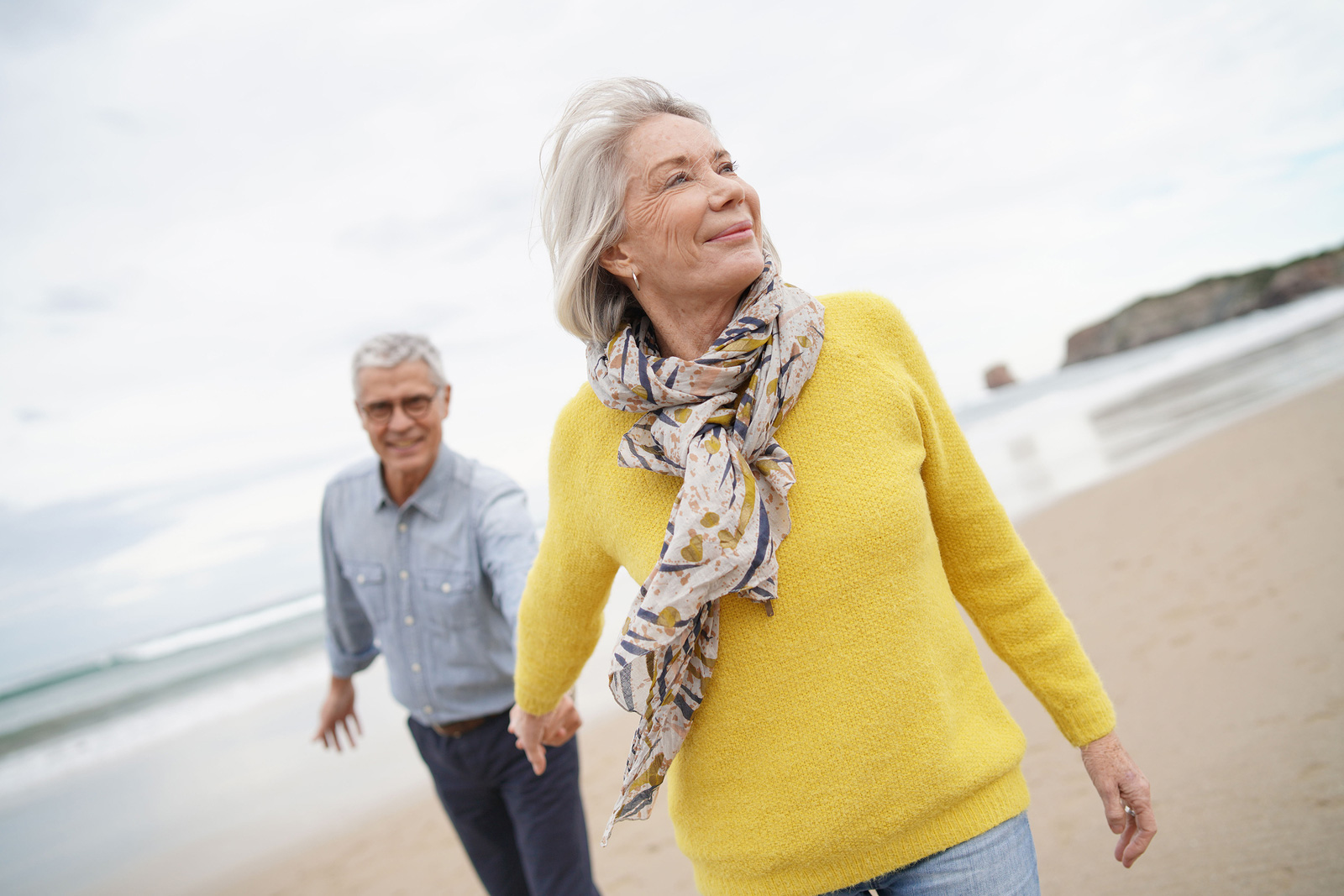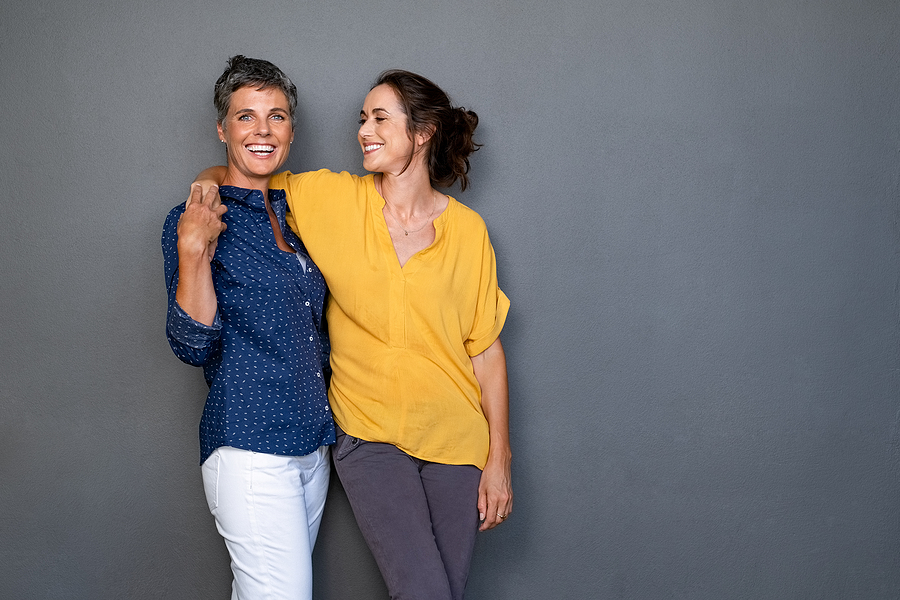In the United States, age is not revered – it’s feared.
Everywhere we turn, we receive the message that youth equals vitality with the underlying message being that getting older means poor health, lack of purpose, and isolation.
But it doesn’t have to be this way!
The society that we live in tells us that aging is nothing to celebrate. We see it in the way youth is celebrated, and in how we treat older members of our communities. The prevailing attitude is that when we reach a certain age, we should retire, slow down, and step aside for the younger generation.
But I couldn’t disagree more!
It’s my goal to share information that helps women understand that you do NOT have to age in an unhealthy way. Despite what American culture tells you, you do have options.
There’s simply no reason to think that as you get older, you’ll slowly fall apart until you die.
What Are the World’s Longest Living Populations?
Have you heard about blue zones? These populations are living proof that staying healthy and active into your 90s and beyond is possible! In the early 2000s, Dan Buettner, working with National Geographic, identified five areas (the “blue zones”) where people live longer – and better – than anywhere else in the world. In these areas, people lived to be 100 years old at a rate ten times higher than in the United States. And they aren’t simply making it to 100 – they are thriving all the while!
These populations are filled with healthy, active older people who are vital members of their community. That’s a sharp contrast to what so many older Americans experience. It’s not climate or geography that is behind the longevity of these populations – in fact, they’re spread out across the world. One, a large community of Seventh Day Adventists, is even here in the US (in Loma Linda, California) – despite our societal norms!
The other four blue zones are located in Ikaria, Greece; Sardinia, Italy; Okinawa, Japan; and Nicoya, Costa Rica. As you can see, these communities span great distances, so location cannot account for the longevity of the people. People in blue zones live healthier, happier lives – but why? As it turns out, there are many similar characteristics present in each of these populations.
What Common Characteristics Do Blue Zone Populations Share?
Although each blue zone has its own unique culture, varying climates, and different societal expectations, many similarities have emerged that may explain the unusual longevity these populations experience.
Each of these characteristics embodies many of the things we have all heard repeatedly. The difference is, the expectations are built into the way of life, and are therefore easier to achieve. These behaviors include regular movement through daily activities; eating habits that promote good health; quieter lives that include prayer, meditation, and/or naps to keep stress at bay; social connections, spiritual faith, and a sense of belonging; and having an overall sense of purpose as they move through life.
Buettner and his colleagues think the lessons we can learn from these blue zones are so important that they founded Blue ZonesⓇ and work to bring these lessons to communities across the United States, changing infrastructure and policy to help people make healthy choices. In these Blue Zone Projects, change doesn’t depend on individuals. The communities must have a vision for change, and be willing to put supports in place to improve the health of the entire community.
When the community investment is present, these projects are seeing great success. Beach Cities, CA, for instance, reduced tobacco use by 36% and obesity by 25%. And Albert Lea, MN saw a 49% reduction in health care claims, and a three-year life expectancy increase.
How We Can Learn From the Blue Zone Way of Life
We aren’t all lucky enough to be born into communities that support health the way the blue zone (and the Blue Zone Project) communities do. But that doesn’t mean we can’t take charge of our own lives, and create similar conditions for ourselves. Although American culture makes it more difficult, with intention and confidence, you can live your best life in spite of the norms that surround you.
The first step is changing your mindset. We’ve been fooled into thinking that aging is a difficult process. We’ve bought into the idea that when you reach a certain age, your work life is over (and often that means sitting around wondering what purpose you serve). What you think makes such a difference in how you live – so flipping any negative scripts you’re running in your head is the first step towards success.
As we age, we can be vital, contributing members of society. We can keep ourselves strong and healthy. We can find joy, fulfillment, and satisfaction in our lives.
You only have true power over yourself. You can’t change others, and you may not be able to change much about the community you live in. But that doesn’t mean you’re helpless to do anything about your own health!
Top 3 Lessons Learned from Blue Zones That Can Help You Achieve A Higher Quality of Life!
Here are three great lessons to help get you on the path to the longevity and vitality that you deserve – despite where you live!
1. Connection Matters
There are so many ways we can be connected to others, and there is scientific evidence that social connections can have an impact on both physical and mental health. In all of the blue zones, these connections are clear. Family is highly valued, with aging parents or grandparents living in the home or very nearby. These populations also intentionally create close social networks (often faith based) that support good health. The common thread here is one of belonging.
I have a friend who has created this kind of connection with terrific results. She’s part of a fitness community that is committed to supporting and encouraging each and every member to live their best lives. She went from not being able to run half a mile to running 5K (and even an occasional 10K) races, lost 20 pounds, changed her eating habits, and at almost 50 is feeling better than she ever has. And the best part is, when she feels herself begin to slide into old habits, the group is there to pull her back.
It’s so difficult to make changes on your own without any accountability. Finding a group that shares your health goals is one of the best ways to stay focused and moving forward.
2. Dietary Patterns Matter
What you eat, and how you eat, are both key elements of living your healthiest life.
In the blue zones, plants take center stage, with meat eaten an average of five times per month. And when meat is consumed, it’s usually pork rather than red meat. Even if you choose to eat meat more often, filling your diet with a wide range of fruits, vegetables, beans and legumes can ensure that you get the essential nutrients you need.
Locally grown/raised food is far less likely to contain unwanted preservatives, and eating organic as often as possible will keep pesticide exposure to a minimum.
When you eat – and how much – are other key factors. In the Okinawan culture, they recite a mantra “hara hachi bu” before each meal, to remind them to stop eating when they feel 80% full. Portions in the US, especially at restaurants, are much larger than they should be, and we often forget that it takes time for our brains to receive the message that we are full.
Periodic fasting also promotes good health. For those in blue zones, the smallest meal is often their last meal of the day, in early afternoon or early evening. They then wait until the following morning to eat again.
3. Activity Matters
The last lesson we can take away from what is known about the blue zone populations is that movement is an integral part of daily life. For these communities, however, it’s not about fitness classes and hours at the gym. The environments they live in promote continual movement throughout the day. Rather than using machines for convenience, housework, gardening and yard work are done manually. They walk to social gatherings, and their recreational pursuits often involve physical activity.
This supports what I’ve been telling women for years — you don’t have to run marathons to be physically fit! Taking the stairs instead of elevators, walking or biking to work, parking far from the door, taking a hike with friends, or going out dancing are all great ways to keep your body moving.
You Can’t Avoid Aging – So Embrace It!
You don’t have to buy into the idea that aging gracefully isn’t possible. You have the power to make choices for yourself that will allow you to enjoy life longer. I encourage you to read more about the blue zones, and incorporate the healthy habits demonstrated by these populations into your daily life as much as possible. Then get out there and enjoy your 60s, 70s, 80s and even 90s!
Resources:
https://www.bluezonesproject.com
https://www.bluezones.com/blue-zones-life/







